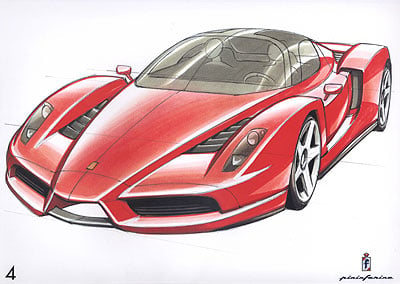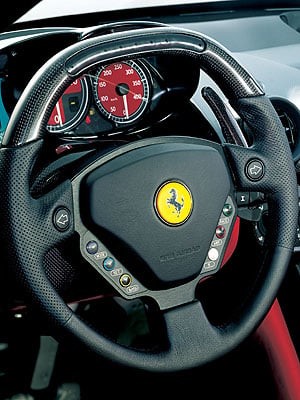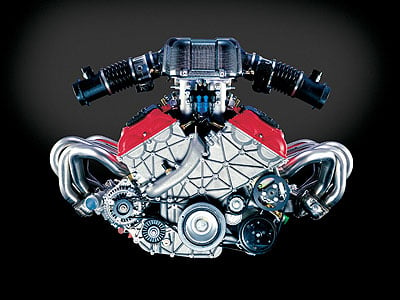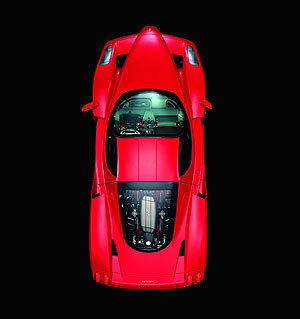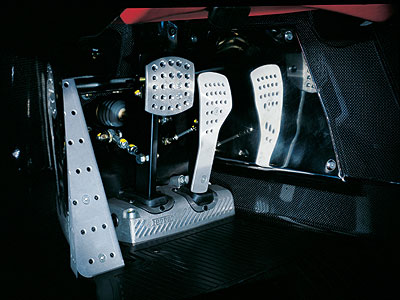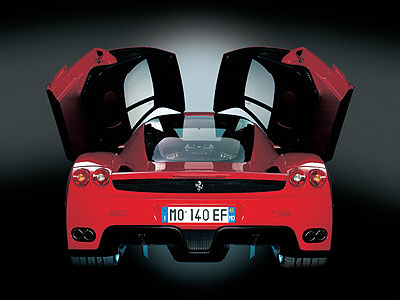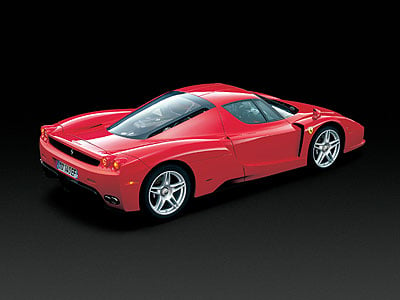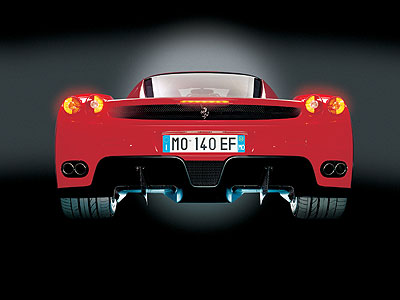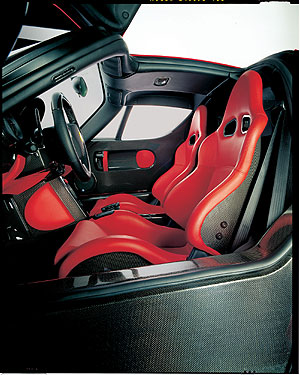From Race to Road
Text: Charis Whitcombe
Photo: Ferrari Press
There are many ways to justify the eye-watering sums which manufacturers invest in their motorsport programmes. First and foremost, of course, is brand image. But it’s also claimed that the development of racing technology will eventually filter down to the road cars we all drive. Maybe: but while we can now buy cars with sequential gears and traction control, there must be cheaper ways to develop these cars than launching a bid for the F1 World Championship.
However, there are some marques which began in motorsport and which, for a long time, appeared reluctant to sully their cherished image by producing mere road cars. Take Maserati. Or Ferrari. And while these worshipped marques have long been in the business of selling machines for the road, the cars they build today still cling to a racing heritage. With no car is this more the case than the new 220mph Enzo Ferrari: the company’s fastest-ever road car, it’s named after the founder who felt that racing cars should lay the foundations of road car designs.
The car was announced to the public the day after Ferrari clinched its fourth consecutive Formula 1 Constructor’s World Championship. Scheduled to make its UK debut at the October Motor Show, Ferrari tells us that the Enzo embodies the spirit, the looks and much of the technology developed for Formula 1. According to Ferrari President, Luca di Montezemolo, "Formula 1 has never offered our company such a genuine laboratory for advanced research as it has in recent years."
Power and Beauty
The mid-engined, two-seater Enzo is powered by a new compact, ultra-light 660 bhp, V12. The aims for the engine were high power – 110 bhp per litre – with generous torque from low revs and a driveable nature. More than 383 lb ft of torque is generated at 3,000 rpm while the engine’s variable inlet and exhaust valves, plus electronic management for each row of cylinders and a drive-by-wire throttle, maximise engine response.
Meanwhile, it’s immediately obvious that the car’s Pininfarina styling is derived largely from its function. The nose section is clearly F1-influenced, while the entire body shape allows for optimum airflow to cool the engine and brakes. Massive downforce (for a road car) is achieved without creating much aerodynamic drag - ground effects mean it doesn’t need a large rear wing, while the aerodynamic balance of the Enzo at speed is controlled by automatic adjustments to the twin front flaps and single rear spoiler.
The chassis is made entirely from carbon fibre and aluminium honeycomb sandwich panels, giving rigidity and strength without too much weight. The body panels are made from composite materials while the doors hinge upwards and forwards, assisted by gas struts. The Enzo passes all current and many future crash safety standards.
Technical Detail
The Enzo has many remarkable features under its skin. For a start, it’s the world’s first road car to use carbon ceramic brake discs and the first with fully integrated electronic control systems. These systems cover the engine, gearbox, suspension, anti-lock brakes, traction control and aerodynamics. With the car in motion, the systems continuously share data and react according to the driver’s actions. During gearchange, for example, the gearbox sub-system takes priority over others, managing the clutch, engine and suspension settings to give the fastest, smoothest gearchange while preventing the car from pitching.
As with an F1 car, the gearbox in the Enzo is coupled directly to the rear of the engine by a casting that doubles as the engine oil tank. The six-speed gearbox adopts triple cone synchronisers on all ratios to ensure smooth changes, operated electrohydraulically by the driver’s paddles behind the steering wheel.
Fully independent suspension uses double wishbones front and rear, with antidive-antisquat geometries to limit pitching during braking and acceleration. The four coil spring/damper units are mounted horizontally on the chassis and operated by push-rod links to the wishbones – just as in an F1 car. The vehicle’s speed, attitude and load is continuously monitored, with each damper’s setting adjusted to give the best ride and handling.
Just 349 examples of the Enzo will be produced, all of them left-hand drive. Ferrari UK is anticipating that 25 to 30 Enzos will be available for sale in Britain. The price is still to be confirmed, but won’t be less than £425,000.
Enzo Ferrari: The facts
| Engine: | 6.0-litre, mid-mounted V12; bore/stroke 92mm x 75.2mm |
| Power: | 660bhp at 7,800rpm |
| Torque: | 657Nm (485lb ft) at 5,500rpm |
| Transmission: | 6-speed sequential gearbox, F1-style electrohydraulic clutch-less manual gear selection; limited-slip differential |
| Chassis: | Carbon fibre and aluminium honeycomb monocoque |
| Suspension: | Fully independent via double wishbones front and rear; with four coil spring/damper units mounted horizontally and operated by push-rod links to the wishbones (F1-style), with continuous electronic adjustment. |
| Brakes: | Carbon-ceramic brake discs front and rear: 380mm diameter, 34mm thick. |
| Steering: | Power-assisted steering rack |
| Wheels/tyres: | Single-bolt light aluminium alloy wheels front and rear; Bridgestone tubeless radial tyres 245/35 ZR front; 345/35 ZR rear |
| Dimensions: | 4,702mm long; 2,035mm wide; 1,147mm high; 2,650mm wheelbase. Fuel tank capacity: 110 litres (24.2 gallons) Kerb weight: 1,365 kg (3,009lb) |
| Official performance figures: | 0-100kph(62mph): 3.65sec Top speed – estimated at more than 217.5mph |
| Price and availability: | Won’t be less than £425,000. To be launched in UK at October Motor Show. |
Gallery
